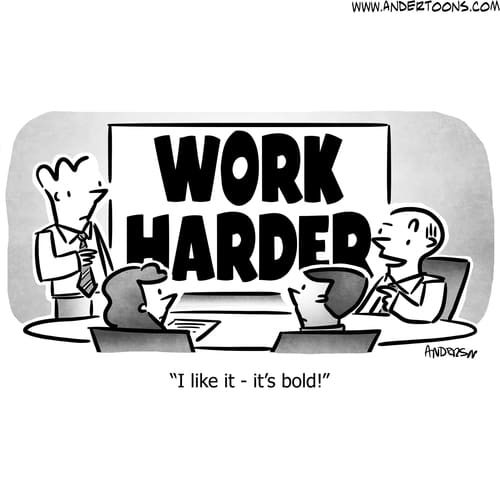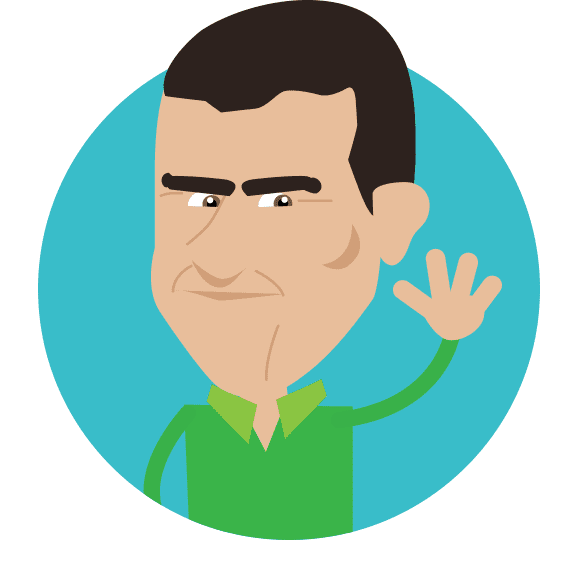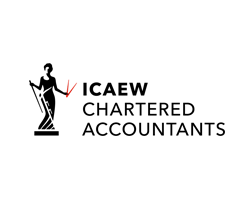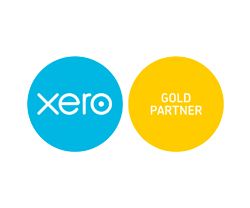Boosting Productivity – Workplace Factors
 We all have days on which we just don’t feel like we’re at the top of our game. The slightest murmur distracts you from the task at hand and time seems to run backwards. It’s an inevitable byproduct of being human; we’re not machines.
We all have days on which we just don’t feel like we’re at the top of our game. The slightest murmur distracts you from the task at hand and time seems to run backwards. It’s an inevitable byproduct of being human; we’re not machines.
We need to give ourselves the best chance of keeping these sort of days to a minimum; it won’t happen by magic. Over the next two weeks we’ll be looking at how you and your staff can increase your productivity. Some of the factors will lead to major increases and others will be more marginal that will need to be accumulated with other marginal factors.
This week, it’s the turn of the workplace, which I will assume for most of you is an office.
Office environment
Lighting
It is preferential to illuminate your workplace with as much natural light as possible. Natural light has positive effects on health and mood so, in turn, has a positive effect on productivity.
Most offices will also need artificial light to augment the natural light, in particular if staff spend a lot of time looking at computer screens. In this case the ambient light needs to be bright enough to relieve the effect of the brightness of the computer screen.
You should also consider the complexity of the tasks being undertaken. Brighter light leads to higher productivity when performing complex tasks while only relatively dim light is required to achieve the same level of productivity when performing simple tasks.
Think about introducing desk lamps or light boxes to be used when complex tasks are being undertaken or to augment lighting when natural light is lacking, for example during winter.
Be careful with artificial light sources, though. Artificial light – both dim and high intensity – can cause eye strain, tiredness, headache and, in the case of high-intensity artificial light, migraine. These effects can be mitigated with careful positioning of either the light source or office furniture.
Ceiling lights will normally be fine but desk lamps should be positioned on the opposite side of the desk to the writing hand and behind the computer screen to give it backlighting. This will reduce eye strain.
Temperature
Conclusions vary from study to study, but most put the optimum workplace temperature between 21C and 23C and relative humidity at 40%. The effects of heat can lead to tiredness, headaches, throat and eye irritation and loss of concentration.
Employers are also required to maintain a “reasonable” minimum temperature, with current guidelines setting this to be 16C in a non-strenuous workplace. Heating is, therefore, just as important as cooling.
The best way to control workplace temperature comfort is via air conditioning units and, if necessary, dehumidifiers. For those who air conditioning is not an option, there are some other useful strategies that can be adopted:
- Fit blinds and close them when the sun is shining through that side of the room
- Keep windows closed. Open windows just equalise the office temperature with that outside
- Provide desk fans or other air coolers
- Make cold drinks freely available
- Arrange periodic rest breaks in cooler areas
- Introduce relaxed dress codes. Ditch the suit and tie in favour of loose clothing
- Introduce flexible hours so that more of the day’s working hours fall into cooler periods
Air quality
Poor air quality will impact on ability to focus and think clearly and can even be detrimental to our health if noxious chemicals are inhaled, for example carbon monoxide or cleaning chemicals.
You’d initially think to open a window to improve the office air quality, but you need to carefully consider your location. If you’re office is near a busy road then there’s a good chance opening a window will lead to more pollutants and noxious chemicals entering your office.
Opening a window in summer can also pose problems for hay fever sufferers if your office is near any form of greenery.
You might, therefore, want to think about investing in an air purifier. This will remove unhealthy chemicals from the air and some models can also act as air coolers or warmers. Dehumidifiers can also come with air purification systems so you have plenty of options if you’re looking to get more bang for your buck.
Décor
A study at the University of Texas found that a white-painted office was less productive than one with blue or aqua walls. Similarly, the University of British Columbia found blue walls increased communication and creativity.
So it looks like painting the walls of your office blue is the way to go.
Desk setup
Being comfortable at your desk is essential for effective working. Being uncomfortable will lead to loss of concentration and at times sore arms, shoulders, necks and backs.
To get the most out of your desk setup:
- Get an adjustable chair. You’ll want to be able to adjust the height and inclination as well as arm height. A slightly reclined chair is optimal to avoid back pain
- Use pillows to support your back
- Keep your feet flat on the floor or on a foot rest
- Consider an adjustable desk to allow for periods of standing. Standing also reduces back pain
- Ensure your monitor is between 24-36 inches from your eyes
- Ensure your monitor is below or just at eye level
Working practise
We all have our own way of operating that we think makes us our most productive. For most of the time this will work for us, but on the odd off day we need to look at some other techniques to get us back on the productive straight and narrow.
Lunchtime
Leave the office at lunch time. Skipping lunch can lead to poorer performance in tasks requiring memory and concentration. Communal breaks are better still. Bank of America conducted a study on communal breaks and found that it led to a 15-20% boost in productivity.
Out of hours email
Delete your work email accounts from your mobile devices if you want to be more productive in normal working hours. Checking email out of work leads to more stress, which leads to higher levels of the stress hormone cortisol, which leads to poorer sleep, which leads to… yep, a drop in productivity.
Take an afternoon nap
To get rid of that sluggish feeling, drink a cup of coffee then go for a 20 minute nap. The nap will recharge your brain and when you wake up the caffeine in the coffee will just be taking effect to remove any sensation of tiredness.
The difficulty with this technique – apart from the strange looks in the office – is getting off to sleep quickly, although this will be easier straight after a meal. It would make sense to incorporate this into your lunch break routine.
Stop multitasking
Effective multitasking is a myth. The reason for this is that multitasking isn’t actually multitasking: it is just rapidly switching focus between two tasks. When you do this you only end up completing both tasks in a more inefficient manner than if you’d undertaken them consecutively.
To see this in action, try responding to an email query at the same time you verbally answer a question posed by a colleague.
Introduce “power” hours
Introduce short periods of “deep work” with no distraction. Set aside a two hour period in the morning and a two hour period in the afternoon in which you will focus on one task. Let your staff or work colleagues know that you aren’t to be interrupted during these periods. The in-between time can be used to catch up on mundane tasks, clearing emails and making calls.
This way of working allows you to focus on the task in hand. If you don’t set the time aside then you may have the best of intentions of completing the task by the end of the day, but with distractions you will probably only get three hours of the task done. Setting the power hours aside will guarantee you’ll have four hours on the task and they will be more productive hours because you will not have to reacquaint yourself with the task following interruption.
An even more structured version of this is the Pomodoro technique.
Delegate and set goals and objectives
This involves trust, but increased responsibility is vital for improving the morale and job satisfaction of your staff. Furthermore, delegation is the only way your employees will gain new skills and leadership. This leads to a sense of achievement and direction, both of which boost productivity.
Setting objectives engenders the same feeling of achievement once they are achieved. Be careful to make them obtainable because if they are wildly optimistic then the experience can quickly turn into one of demotivation.
Practise positive reinforcement
Tell employees they are doing a good job and incentivise them to do so. Praising good work to the employee’s superiors and peers also creates a sense of fulfilment and motivation. Highly motivated and incentivised employees will place greater value on productivity.
If criticism is required, ensure it is not personal and is constructive with a clear roadmap toward improvement.
Equipment and training
It goes without saying that if you or your employees have inadequate equipment and/or training then productivity will not be at optimal levels. Ensure regular reviews incorporating staff feedback are conducted in both areas.
Move to a four day week
With this, you would reduce each employee’s working week by one day with no corresponding reduction in salary. This is, admittedly, the nuclear option but stick with me. New Zealand-based company Perpetual Guardian trialled a four day week with its 240-strong workforce back in the spring of 2018.
In conjunction with Auckland University, they found that productivity was maintained but the employees were generally less stressed, more engaged and reported an improvement in work-life balance. The policy was adopted permanently in September 2018.
It turns out that having less time to do tasks focuses the employees on becoming more efficient and forces them to make better strategic decisions.
Of course, a happy byproduct of better work-life balance is that employee wellbeing is boosted, which aids in staff retention.
Breaking impasses
Getting stuck in a rut with difficult or complex tasks obviously means productivity is dipping. It can also have an effect on confidence and morale. So, what techniques are there to help us get our creative juices flowing? Here are some to try:
- Let yourself daydream – you will perform better at problem-solving tasks if you do something boring or mundane beforehand
- Dim the lights – this removes mental constraints and encourages a riskier way of thinking. This seems to contradict the extra productivity derived from performing complex tasks in bright light, but here we’re concerned with breaking an impasse here so it appears that the change in light intensity is what brings about the boost to creativity
- Put some music on – around 70 decibels of background noise will boost abstract thinking
- Stand up in meetings – this creates a sense of excitement and information-sharing and boosts the creativity of groups
- Go for a walk – it’s not clear why this helps but it’s thought to be because light exercise increases blood flow and improves mood
- Be messy – people with messy desks tend to be more creative, but beware: a messy desk can also lead to more stress and losing track of things
In summary
There are plenty of ideas above for you to think about so first try some that are easy to implement and then see how you can incorporate the more expensive or wide-ranging strategies. There are some no-brainers, such as maintaining a comfortable temperature and level of light, but be careful of implementing too many workplace-based strategies at once; you may not be able to isolate what works for you and what doesn’t.
Not all of the above will work for you so don’t be afraid to ditch ineffective ideas in favour of something else. It’s not been a waste of time; you’ve found a strategy that doesn’t work, which is useful information.





